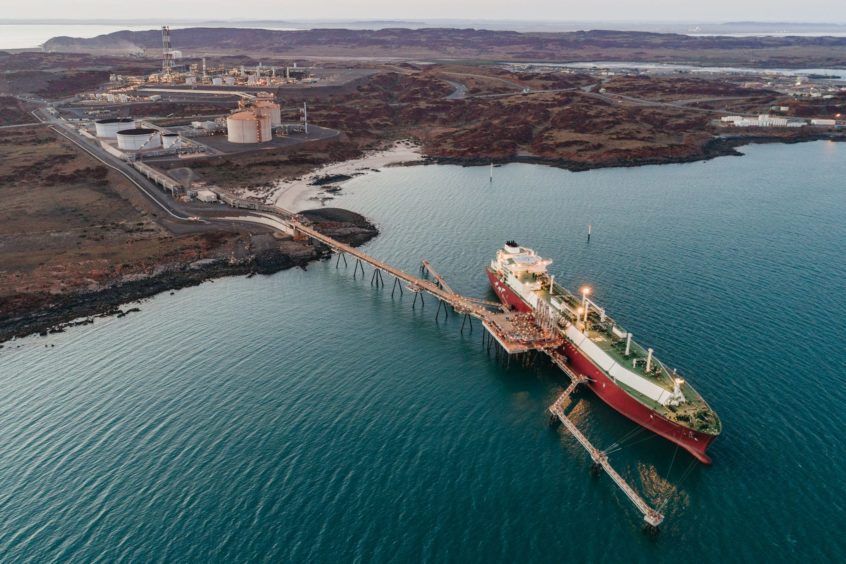
A strategic merger between BHP and Woodside has been on the deal dream list in oil and gas circles going back three decades. Yesterday the pair confirmed that they will enter into a merger of their respective oil and gas portfolios in an all-stock deal that creates an LNG powerhouse.
“It’s taken a pandemic, ESG rhetoric signalling terminal industry decline, looming major project FID (at Scarborough) and refreshed management to finally see it arrive,” noted analysts at Credit Suisse, referring to the deal that has been mooted for 30 years.
Fair deal
Significantly, Woodside shareholders seem to be getting a fair deal. Based on Monday’s closing price, the deal values BHP at $13.5 billion, offering a 12% discount to BHP’s stated net asset value (NAV) of $15.4 billion.
Credit Suisse sees Australian-listed Woodside trading at a 25% discount to net asset value at long-term oil prices of $60 per barrel, so perhaps “BHP got the slightly better end of the deal, but it’s all within margin of error,” said the bank.
Moreover, the valuation does not factor in the $400 million in yearly synergies, which will benefit shareholders. Investment house Bernstein estimates this is worth $3 billion alone in net present value, or roughly 10% of the combined market cap.
Indeed, the proposed merger, due to complete in Q2 2022, will create the largest energy company listed on the Australian Stock Exchange, valued at A$41 billion (US$29.9 billion). The enlarged company will also hold a global top 10 position in the liquefied natural gas (LNG) industry by production.
In setting the share ratio at 52% Woodside and 48% BHP, Woodside indicated that it is a fair value, or no premium deal, and reflects all decommissioning costs in the valuation across commodity prices.
LNG powerhouse
The merger makes strategic sense with compelling logic from a Woodside shareholder perspective, said Bernstein. “While there will be those who do not want to invest in oil and gas, Woodside will remain a core holding to investors who want to retain a position in LNG, which has a key role as a bridging fuel in the energy transition,” said the research firm.
Credit Suisse reported that the new enlarged globally significant LNG weighted company could eventually become a top 5 LNG player by production. It will have a diversity of low-risk geographic exposure and growth options, including a de-risked Scarborough project, LNG supply and growth options across the Pacific and Atlantic basins, as well as various Gulf of Mexico expansion avenues.
Once the merger is completed, Credit Suisse expects that Woodside will seek to focus across the three hubs of offshore Western Australia, Gulf of Mexico, Senegal and potentially also Trinidad & Tobago. Although Trinidad & Tobago assets could be sold to adjacent infrastructure owner Shell. Woodside will likely exit or reprioritise other smaller non-core positions.
Scarborough LNG virtually ensured
Crucially, the deal will enable the proposed 8 million tonne per year (t/y) Scarborough LNG development to continue as planned with a final investment decision (FID) expected later this year. Woodside will now control the project 100% with the path to FID virtually ensured and fully funded even without further sell downs.
Scarborough gas will be exported via the Pluto LNG export terminal, which will see an additional 3 million t/y capacity added to Pluto Train 1 and a new 5 million t/y liquefaction train, dubbed Pluto Train 2, built. Woodside has launched a sell down process for up to 49% interest in Pluto T2 and is also seeking to reduce equity in the Scarborough offshore resource in Western Australia.
There are other benefits to the deal too. Woodside will now be the dominant shareholder in the legacy North West Shelf LNG export project in Western Australia. Bernstein believes this “will lead to a more coherent strategy in terms of long-term utilisation. Given the highly fragmented current partnership, alignment around terms for third party gas has been painful. The combination of Woodside and BHP creates a dominant partner. We expect consolidation to continue,” said the investment house.
Elsewhere, Woodside expects to retain BHP’s Gulf of Mexico assets. They add high margin oil to the portfolio offering significant cash flow in the short term for future expansion. Mad Dog Phase 2 is on track for first oil in 2022 and Shenzi North FID has been taken by BHP targeting first oil in 2024.
Stable management
Confirmation that Woodside acting chief executive, Meg O’Neill, will take on the role permanently and lead the new company from Perth, helps stablise the management outlook. She had been acting chief executive since Peter Coleman retired in June 2021.
In terms of share ownership, Woodside signalled that it sees BHP shareholders registering a significant overlap of Woodside shareholders. Moreover, Woodside said it is exploring opportunities for London and New York listings to help retain international ownerships.
On its emissions targets, Woodside remains committed to 15% emissions reduction by 2025, 30% by 2030 and net zero by 2050.
Bullish bets
Both Bernstein and Credit Suisse remain bullish on Woodside post-merger. The main downside, at least in the short term, is that BHP shareholders will have a material portion of the equity and they may not have a long-term mandate or appetite to hold Woodside shares. This would present an overhang with perhaps 12 months of churn in the share price, but a trade-off worth the upside, reckons Credit Suisse.
The deal looks long-term positive for BHP with an ESG rerating for its mining portfolio on the cards once it divests from fossil fuels. It would still need to divest coal, as well as petroleum, in due course.
“After having waited too long to divest thermal coal, BHP should know it’s better to exit petroleum sooner rather than later, with a high pricing backdrop and looming Scarborough FID presenting the most opportune timing BHP may get,” said Credit Suisse.
Indeed, a sale to Woodside in 2021 may present a last opportunity to offload all petroleum assets together, added the bank.
Ultimately, the dream deal sounds like a win-win all around.
But as Credit Suisse cautioned “a deal isn’t done until it’s done, and there is always possibility for BHP to angle for some more value somewhere.”

